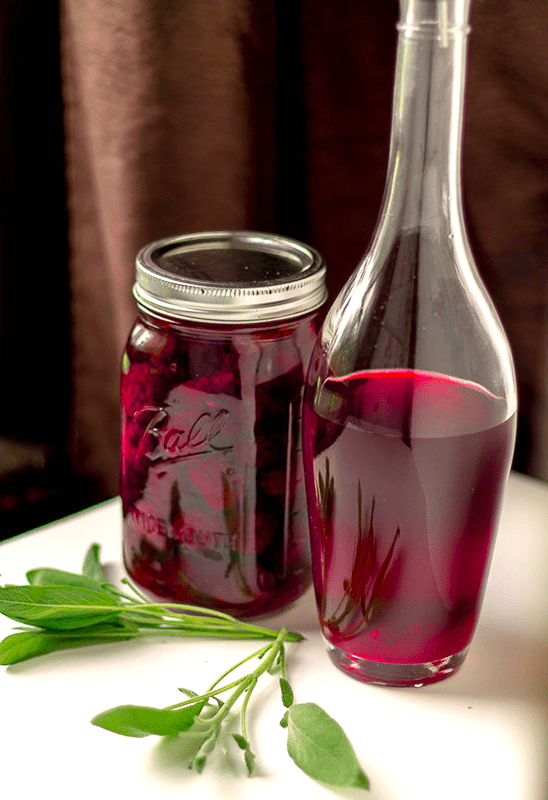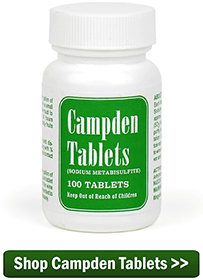 I’m curious as to why does wine turn to vinegar. When the threat of this happening over, if ever, and what causes it. Is there an in depth explanation anywhere I can get?
I’m curious as to why does wine turn to vinegar. When the threat of this happening over, if ever, and what causes it. Is there an in depth explanation anywhere I can get?
Thanks Jane
—–
Dear Jane,
When you talk about how or why a wine turns to vinegar, you have to start with the acetic acid. This is the stuff that makes vinegar taste like vinegar. It’s the tang. If you had acetic acid in a jar and poured some of it into a fruit drink, it would immediately start to take on the characteristics of vinegar. It’s what makes vinegar, vinegar.
Acetic acid is made by a bacteria known as acetobacter. This bacteria is everywhere: in the air, on fruit, on grape presses, etc. When acetobacter gets into your wine it can slowly turn the alcohol into acetic acid, if left unhindered.
The key takeaway here is: if you control the acetobacter; you control the vinegar.
During a fermentation the wine is relatively safe. The gases from the fermentation help to keep acetobacter fall-out from getting into the wine must. Also, domesticated wine yeast are bred to inhibit bacterial growth, giving them the term killer yeast. It is not until the fermentation is over that caution needs to be taken.
Fortunately for us winemakers, acetobacter can be very easily destroyed before they have a chance to colonize and produce acetic acid. All it takes is the addition of sulfites in the form of either Campden Tablets, Sodium Metabisulfite or Potassium Metabisulfite. Use any of these in the wine, and the acetobacter will be very easily destroyed.
 I would suggest using sulfites 24 hours before adding the wine yeast. Do not use an air-lock or lid on the fermenter during this time. You need the sulfite gases to dissipate into the air during the 24 hours, otherwise it will remain in the wine must and destroy some or all of the wine yeast when you add it. I also suggest adding sulfites just before bottling to keep the wine fresh while in the bottle. You can find more information on our blog about when to add sulfites to your wine.
I would suggest using sulfites 24 hours before adding the wine yeast. Do not use an air-lock or lid on the fermenter during this time. You need the sulfite gases to dissipate into the air during the 24 hours, otherwise it will remain in the wine must and destroy some or all of the wine yeast when you add it. I also suggest adding sulfites just before bottling to keep the wine fresh while in the bottle. You can find more information on our blog about when to add sulfites to your wine.
Make sure you use a domesticated wine yeast to keep your fermentation clean. And, always sanitize your homemade wine equipment with a sulfite/water solution before using it.
The bottom line to the question: “why does wine turn to vinegar?” is because acetobacter was allow to grow in your wine. Stop the acetobacter, and you’ll stop the vinegar.
Happy Wine Making,
Ed Kraus
———————————–
Ed Kraus is a 3rd generation home brewer/winemaker and has been an owner of E. C. Kraus since 1999. He has been helping individuals make better wine and beer for over 25 years.

If your wine starts this process is there anyway to stop it and fix the wine. My wine was clear and was very good but it turned cloudy and has a slight vinegary taste to it.
William, unfortunately there is nothing that you can do to reverse the vinegar formation in your wine. However, you can prevent further vinegar formation by treating the finished wine with 1.5 campden tablets per gallon of wine and bottling immediately.
Do you have a recipe for making a good wine vinegar?
And fruit flies carry acetobacter around so they need to be controlled.
Ok then. But why has my cherry wine NEVER turned to viegar???
Cherries picked directly from my own tree that is not sprayed nor tampered with in any way. 3, Exctly 3 and only 3 ingredients: Cherries(tart), water and sugar.
Mixxed in a 5 gallon stone crock and only covered with a pillow case for about 3 weeks PRIMARY fermentation.
NEVER any hint of vinegar.
BUT, Wild Blackberries will turn to vinegar about 25% of the time. If i have 4 crocks full of wild blackberry (sometimes use 1 gallon pickle jars) at least 1 of the crocks or pickle jars will turn to vinegar during PRIMARY fermentation.
Same for persimmon and Bradford pear. 1 out of 4 carboys will turn to vinegar. I clean all eqquipment with 90% isopropyl alcohol.
BUT the cherry NEVER turns to vinegar.
I have never used any additional yeaats nor ingredients what so ever. Three, exactly threee and only 3 ingredieents: fruit, water, sugar.
-PackardV8
Packard, we are glad to hear that your Cherry Wine is doing so well!
Wow, PackardV8, those Cherries must have some Natural anti-acetobacter antibodies. Maybe that’s the
Way that some of the very first Wines came to be, minus
The added sugar?
Just a thought, but don’t cherry pits have some cynanide in them? You shouldn’t be getting much (if at all?) in your must if you have no pits in it but maybe the amounts present which are negligible to us are bad for acetobacter…
I’m allergic to sulfites. Any other options?
Chad, unfortunately, there is nothing that you can use in place of sulfites. Below is an article that discusses making wine without adding sulfites.
Can I Make Sulfite Free Wine
http://www.eckraus.com/blog/can-i-make-sulfite-free-wine
Pingback: Eight foods that (nearly) last forever | Wikipedia Editors
Hello, I’m using a store-bought wine kit, and let’s say I added all the ingredients to my primary, and just before pitching the yeast a light bulb broke and some fell into the primary fermenter (Don’t ask!). Can I add some K-meta and wait 24 hours to kill any possible bacteria or contaminants that may have fallen into my wine before pitching the yeast? Or will this ruin the wine kit, as most of them expect you to rinse after sanitizing with K-meta I assume they don’t want you to add any.
Guy, I am sorry, we just do not have information on what kind of damage the insides of the light bulb can do to your wine.
I want Packard’s cherry wine method! I’m a newbie to wine making and very green. Smash the fruit and just ferment with sugar for three weeks or strain first? Rack and ferment again? I love reading about how people make it different ways.
Here’s one for you. I made and bottled my first ever batch of mead at the start of this year. After racking it off to bottles, I tried some of it right away, and it was deliciously sweet, like a German dessert wine. After letting the bottles sit for about 6 months I cracked one, anticipating the taste would have mellowed even more, but instead it tastes like a dry and sour cheap white wine. It’s not quite undrinkable, but close to it especially since this was supposed to be a sweetish honey-wine and it was so right after fermentation stopped.
It dosen’t seem to be sharp like vinegar, but I don’t understand what happened? Did I somehow do a secondary fermentation and it chewed up all the sugar remaining in the honey? Or was it something entirely different and am I in danger if I drink any more of this? (and you have to be in a mood to get your drink on, yet have nothing else in the house available to make yourself drink it.) Would appreciate your insight into what the heck happened.